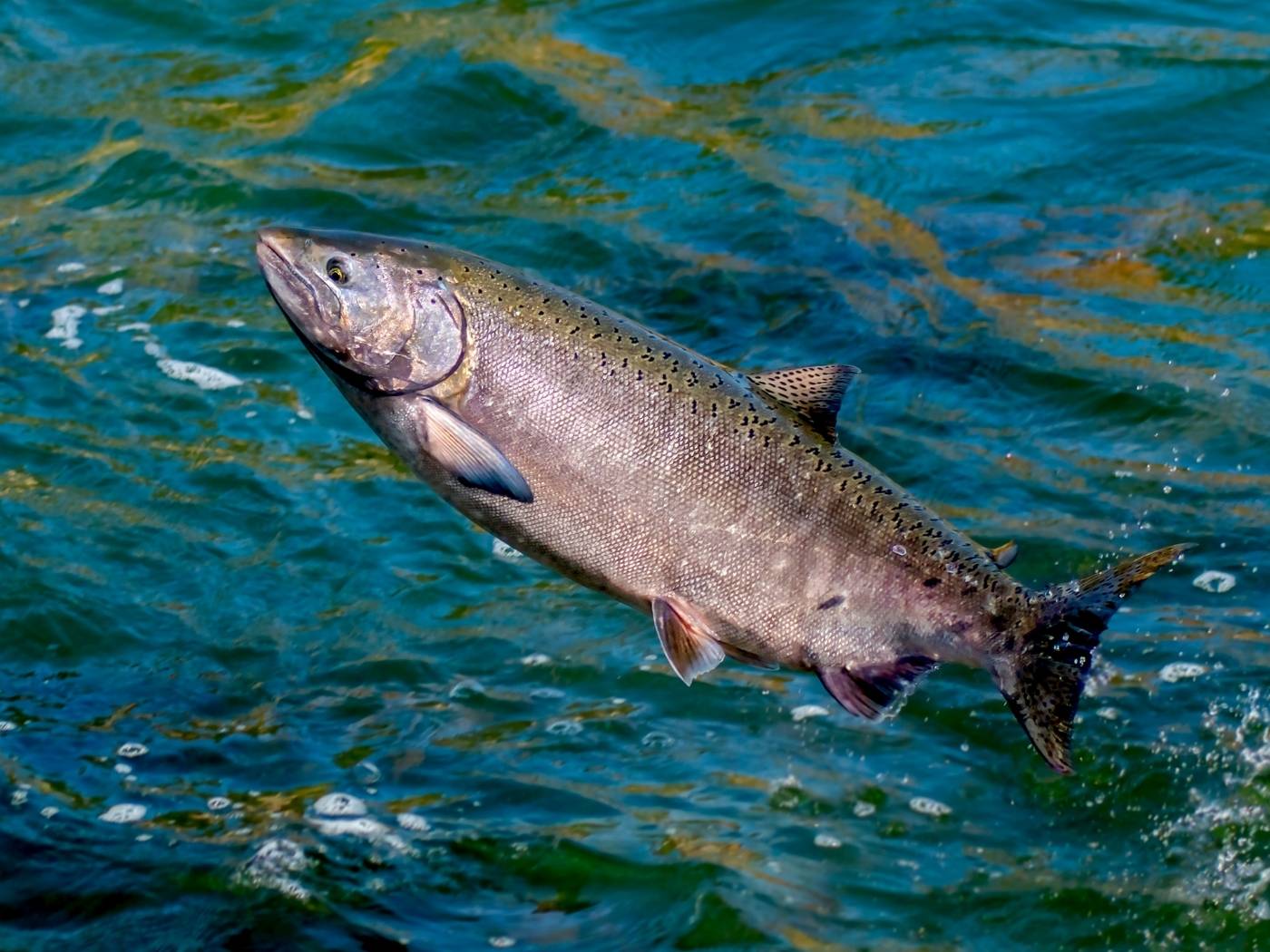In the wild world out there, it's like a symphony – trees, river vibes, and fish survival all in perfect harmony. Think of it as nature's dance floor, especially along Scotland's incredible rivers.
But hey, those once lively waterways are facing a bit of a challenge now. I hear people asking me how can we save salmon from going extinct? and part of the answer is by planitng trees. Deforestation and climate change are like the party crashers, casting a gloomy vibe over these vital ecosystems. And you know who's really feeling it? Scotland's superstar salmon. Rising temperatures, thanks to all the environmental shifts, are throwing a major curveball at the heart and soul of Scotland's rivers.
So here's the lowdown: we're in the midst of this wild tale. Picture it like a gripping novel unfolding right in front of us. And guess what? The plot twist is all about how saving the day involves keeping those riverbank trees intact. They're the unsung heroes in the epic saga of safeguarding the future of Scotland's beloved salmon. It's a wild ride, and those trees are at the core of it all!
Forests & Temperatures: The Threat to Salmon
So, let's chat about climate change – this undeniable force that's throwing shade over Scotland's once-pristine rivers. It's like a vibe shift, turning these aquatic hangouts into less-than-welcoming spots for our finned friends, especially the iconic salmon.
As the temperatures in Scotland's rivers crank up, it's not just a warm hug anymore. For salmon, it's more like an unwelcome heatwave. These once-refreshing waters are now getting a bit too hot to handle, putting our iconic fish buddies in a tight spot. It's a real wake-up call, a nudge to take action in the face of this urgent environmental challenge.
Now, let's talk solutions. Enter riverbank trees – the unsung heroes in the salmon survival story. These leafy guardians step up to the plate, playing a crucial role in battling the downsides of warming waters. Think of them as nature's AC units, regulating temperatures along the riverbanks and providing shady spots for salmon to cool off. It's in these tree-shaded hideaways that our cherished salmon find a breather from the heat, showing just how essential these trees are for their well-being.
The Role of Riverbank Forests
Life for salmon is like a dance, and it all kicks off in the cozy embrace of riverbank forests. Picture lush habitats, intertwined with the salmon's natural lifecycle, setting the stage for their spawning extravaganza. It's like the perfect dance floor – a historical connection between riverbank forests and salmon, where their health mirrors each other in a beautiful dance of symbiosis.
Now, about these riverbank forests – the unsung heroes of optimal aquatic conditions. Their lofty canopies create these natural chill spots, throwing shade on the river waters. It's not just about looking cool; it's a refuge for salmon, a break from the heat of climate change. And here's the cool part – these leafy ecosystems are like nutrient factories for the riverbed, creating a cozy environment that's just perfect for salmon populations.
Riverbank forests are like a magnet for insects, and this is where it gets interesting. These buzzing ecosystems form a vital link in the salmon life cycle. The insects? Well, they become a gourmet feast for young fry and parr, nourishing them during their early days. It's a wild interplay between forests and the insect world, showcasing the indispensable role of riverbank ecosystems in laying out a grand feast for the next generation of salmon.

Barren Riverbanks: Accelerating Decline
The repercussions of barren riverbanks echo through the interconnected tapestry of Scotland's local rivers. Without the protective embrace of trees, the once thriving aquatic ecosystems now grapple with a series of challenges. From heightened vulnerability to temperature swings to a diminished variety of habitats and a decline in nutrient cycling, the impact of barren riverbanks is profound. This ecological imbalance sounds the alarm, emphasizing the pressing need to restore the natural order. It underscores the crucial requirement for collective efforts to breathe life back into the barren stretches along Scotland's riverbanks.
Reforesting the Riverbanks
Responding to the critical imperative for environmental restoration, significant reforestation initiatives are underway to breathe life back into Scotland's once-barren riverbanks. These ongoing projects stand as a testament to the dedication to reinstating the natural equilibrium that historically defined these ecosystems.
The commitment to reforesting Scotland's riverbanks is intricately linked with a profound dedication to safeguarding its abundant biodiversity. Prioritizing the planting of native tree species, including the iconic aspen, which has disappeared from significant areas in Scotland, reflects a deliberate choice. This aligns with the overarching vision of restoring not just the quantity but also the authenticity of the natural habitats supporting diverse flora and fauna.
The Impact of Reforestation on River Health
The profound impact of reforestation extends beyond the surface, delving into a realm of multifaceted benefits. As trees take root along Scotland's riverbanks, they become silent warriors, engaging in crucial tasks like carbon sequestration and the creation of terrestrial habitats. The verdant canopies act as guardians, not only contributing to the fight against climate change by trapping carbon but also weaving intricate habitats that beckon a resurgence of diverse life.
The ripple effects of reforestation are felt in every corner of Scotland's riverscape, bringing about positive transformations in river health. These revived riverbanks, adorned with the green tapestry of trees, serve as a testament to nature's resilience. The benefits cascade down to the wildlife that calls these waters home. The return of trees means a resurgence of healthier ecosystems, promising a brighter future for the diverse wildlife that depends on the vitality of Scotland's rivers. Reforestation becomes a beacon of hope, fostering a thriving environment for both the rivers and the interconnected web of life they support.
What can you do to help?
Feeling the call of the wild? It's time to turn that passion into action! Here's how you can help:
1. Support Reforestation Initiatives: Every tree planted is a step toward restoring the balance of our river ecosystems. Consider contributing to reforestation projects or supporting organizations dedicated to this cause.
2. Get Your Hands Dirty:Join local tree-planting events or start one in your community. There's something incredibly satisfying about putting a tree into the ground and knowing you're part of the solution.
3. Spread the Word: Share the importance of reforestation with your friends, family, and social media followers. The more people know, the more impact we can make together.
4. Connect with Local Organizations: Reach out to local environmental groups and see how you can actively participate in or support their reforestation efforts.
Remember, it's not just about planting trees; it's about nurturing a healthier future for rivers and the incredible life they sustain. Let's join forces and make a lasting impact!
Conclusion
In the intricate tapestry of nature, trees emerge as the unsung heroes, standing tall as guardians of fish survival, with a spotlight on Scotland's iconic salmon. As we've explored the pages of Scotland's ecological history, it's evident that the presence of trees along riverbanks is not just a scenic addition but a critical factor in maintaining the delicate balance of our aquatic ecosystems.
To wrap it up, let's emphasize the key takeaways:
Trees are more than just green scenery. They are lifelines for fish, especially Scotland's cherished salmon. From providing shade and regulating temperatures to offering habitats and fostering nutrient-rich environments, their role is irreplaceable.
The journey doesn't end with awareness; it begins with action. Ongoing reforestation projects symbolize the commitment to revive barren riverbanks and breathe life back into our rivers. But this is a collective effort, a shared responsibility that requires everyone's participation.
Our rivers are a shared heritage, and their well-being is in our hands. Let's stand united in the face of environmental challenges. Support reforestation initiatives, spread the word, and actively participate in the conservation of our rivers and their ecosystems.
In conclusion, the story of trees and fish is ongoing. It's a narrative of resilience, adaptation, and collective stewardship. By safeguarding our rivers, we are not just preserving ecosystems; we are securing a legacy for generations to come.













